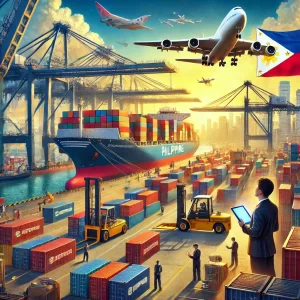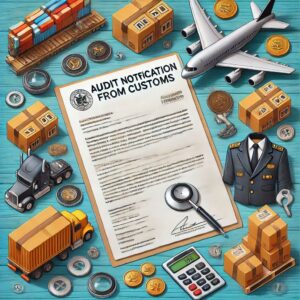For businesses involved in global trade, navigating international shipping regulations is essential. This comprehensive guide seeks to unravel the complexities of these regulations, offering valuable insights to streamline the international shipping processes and ensure compliance, facilitating smoother operations and reducing potential risks for businesses in the global market.
The International Shipping Regulations
3. Harmonized Tariff Schedules (HTS): Harmonized Tariff Schedules (HTS) are a classification system for goods imported into the US based on name, make, and intended use. The correct tariff on imported products determines the applicable duty rates, compliance with existing trade sanctions and embargoes, and the qualification for exemption under trade agreements with the country of origin
4. Compliance with Export Controls: Address the importance of complying with export controls to avoid legal issues and penalties. Explore key considerations for businesses, such as restricted goods, licensing requirements, and adherence to international trade embargoes.
Subscribe to the Ex-works24/7 newsletter
Frequently
Asked Questions
International shipping is governed by a complex set of rules and regulations that vary by country, but some common regulations include:
- Customs Declarations: Most countries require accurate customs declarations for all shipments, including details of the contents, value, and origin of goods. This helps determine customs duties, taxes, and any restrictions on imports.
- Prohibited and Restricted Items: Each country has its own list of prohibited and restricted items. For example, hazardous materials, counterfeit goods, certain foods, and pharmaceuticals may be restricted or prohibited in certain countries.
- Import Taxes and Duties: International shipments are often subject to import taxes and duties, which are calculated based on the declared value of the goods, their classification, and the destination country’s rules.
- Labeling and Documentation: International shipments may require specific labeling (e.g., country of origin, hazard warnings) and documentation (e.g., invoices, certificates of origin, export licenses) to ensure they comply with local regulations.
- Shipping Routes and Standards: Depending on the destination, shipments may need to adhere to specific routing standards or shipping methods (e.g., air, sea, or land transport), especially for dangerous goods or fragile items.
To avoid penalties or delays, it’s important to familiarize yourself with the specific regulations of the destination country and work with your carrier to ensure compliance.
Each country has its own rules about what can and cannot be shipped, but common prohibited and restricted items in international shipping include:
- Weapons, ammunition, and explosives: Including firearms, fireworks, and other dangerous items.
- Drugs and controlled substances: This includes illegal drugs, certain over-the-counter medications, and prescription drugs without proper documentation.
- Food and perishables: Many countries have strict regulations regarding the import of food, especially meat, dairy, and fresh produce, due to concerns about disease and contamination.
- Alcohol and tobacco: Most countries regulate or restrict the import of alcohol and tobacco products, with specific requirements for customs declarations and duties.
- Counterfeit goods: Items that infringe on intellectual property rights (e.g., counterfeit clothing, electronics, or software).
- Hazardous materials: Dangerous goods such as chemicals, flammable items, or toxic substances are subject to strict international transport regulations (e.g., IATA for air freight, IMDG for sea freight).
- Wildlife and plants: Endangered species, certain plants, and products derived from wildlife are often prohibited due to international conservation agreements (e.g., CITES).
It’s essential to check the destination country’s specific shipping guidelines to ensure you’re not inadvertently shipping restricted or prohibited items, which could lead to fines or confiscation.
Classifying goods correctly for international shipping is essential for proper customs clearance, accurate duties and taxes, and compliance with regulations. This classification is done using the Harmonized System (HS) Code, which is an internationally standardized system for identifying products:
- HS Code: The HS Code is a numerical code used to classify products and determine the applicable customs duties and taxes. It typically consists of 6 digits, although some countries may extend it to 10 or 12 digits.
- Product Descriptions: You will need to provide a detailed description of the goods, including materials, use, and any other relevant characteristics to ensure proper classification.
- Proper Valuation: The declared value of goods is crucial for customs purposes. It should reflect the actual transaction price, including shipping and insurance costs, to ensure proper duties are applied.
- Documentation: Depending on the product, you may need to provide supporting documents like invoices, certificates of origin, or licenses, especially for regulated items like electronics, pharmaceuticals, or textiles.
You can obtain the HS Code for your products by referring to government trade resources or consulting with a customs broker. Correct classification helps prevent shipment delays, penalties, and miscalculations in taxes and duties.
Shipping dangerous goods requires strict adherence to international safety regulations, as these items pose potential risks during transit. Dangerous goods include chemicals, flammable substances, gases, explosives, and toxic materials. Key regulations include:
- International Air Transport Association (IATA): IATA regulates the air transport of dangerous goods through the Dangerous Goods Regulations (DGR). It outlines packing, labeling, and documentation requirements for air shipments of hazardous materials.
- International Maritime Dangerous Goods (IMDG) Code: The IMDG Code regulates the shipping of dangerous goods by sea. It specifies the classification, packing, labeling, and documentation needed for sea freight shipments of hazardous materials.
- United Nations Recommendations on the Transport of Dangerous Goods (UNRTDG): The UN also provides guidelines for the safe transport of dangerous goods across all modes of transport.
- Packaging and Labeling: Dangerous goods must be packaged in specially designed containers to prevent leaks or contamination. Packaging must be clearly labeled with hazard symbols, warning signs, and specific handling instructions (e.g., flammable, corrosive).
- Documentation: Shipments of dangerous goods require detailed paperwork, including a Dangerous Goods Declaration, manifest, and special instructions for carriers.
- Carrier Requirements: Not all carriers accept dangerous goods, and some may only handle certain types of hazardous materials. It’s crucial to check with your shipping carrier (e.g., FedEx, DHL, or UPS) to confirm their acceptance of dangerous goods and their specific requirements.
Failure to comply with dangerous goods shipping regulations can result in severe penalties, delays, or damage to the goods. Always ensure that the proper procedures are followed and that your carrier is equipped to handle hazardous materials.
To minimize the risk of customs delays and penalties, follow these best practices:
- Accurate Documentation: Ensure that all required documents (e.g., invoices, packing lists, certificates of origin, and customs declarations) are complete, accurate, and provided to customs authorities. Missing or incorrect paperwork is a major cause of customs delays.
- Correct Classification and Valuation: Properly classify your goods using the correct HS Code and declare the correct value to avoid over- or under-payment of duties and taxes. Under-declaring the value can lead to penalties.
- Comply with Prohibited/Restricted Item Regulations: Research the destination country’s list of prohibited and restricted items and ensure that none of your goods fall into these categories. Attempting to ship prohibited goods can result in fines or confiscation.
- Clear Return and Refund Policies: If there are issues with a shipment, having clear return policies and being ready to cooperate with customs for product re-routing can reduce problems.
- Choose a Reliable Shipping Partner: Work with a reputable carrier that is familiar with international shipping regulations and offers customs brokerage services. Many global carriers, such as DHL, UPS, and FedEx, provide integrated customs clearance services to simplify the process.
- Prepay Duties and Taxes: Some carriers offer options to prepay duties and taxes at the time of shipment, which can reduce delays at customs and speed up the delivery process.
- Track Shipments: Use tracking tools to monitor the progress of shipments and stay in communication with customs if any issues arise.
By understanding the specific customs rules of both your country and the destination country, keeping documentation in order, and working with an experienced shipping partner, you can greatly reduce the risk of delays and penalties.




